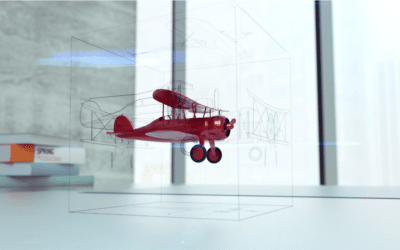In 1993, Sophie B Hawkins released her breakthrough single ‘DAMN, I WISH I WAS YOUR LOVER’ to global and critical acclaim.
At around the same time, something else was being released that would go on to become a marketing mainstay – the Digital Asset Management, or DAM, system. Coincidence? Clearly. But both have had a lasting impact on the world, writes Austen Donnellan, business development director at SPRING Production.
It was about 30 years ago that the first DAM systems emerged as a solution for media, print and publishing companies who needed to store and organise their videos and photos. Initially, they were mostly on-premise systems, and whilst many adopted them, they remained local or closed platforms that could only be accessed internally. Something else was needed for DAM to grow into the position it occupies today – a key tool in many marketing departments’ armouries. Thankfully, the rise of the internet and network connectivity was just that answer.
Over the last decade, DAM systems have become crucial tools for companies looking to organise their branding and visuals. Often overlooked, these systems have expanded to store a variety of assets, catering to the growing demands of marketers to serve multiple channels.
From retailers and consumer brands to B2B products and financial services, the DAM system is the engine that brings together the outputs of many departments and partners, from creative work to photography and video. During this time, DAM evolved into a brand portal used for the sharing of logos, ensuring brand consistency, and enabling teams with a whole host of on-brand visuals.
The role DAM plays in a marketing department “cannot be underestimated”
Which brings us to today, and the role that the DAM plays in the smooth operation of a marketing department cannot be underestimated. As content marketing plays an increasing role in our lives, the assets needed to feed the monster are becoming more complex. This, in effect, means we need to adapt, tailor, flex and stretch assets of every type to fit everything from smartphones to ecommerce sites, social media pages to digital OOH screens, and much, much more.
With this in mind, the remit of the humble DAM system expanded out of the marketing department to become a company-wide tool. Systems can typically cater to all digital file types – in particular the integration with Microsoft programmes which are a key part of business activities – whilst the user experience has been upgraded to allow viewing of multi-page documents.
With the advent of permission structures, businesses have greater control over who is approving what, when and how. Onboarding documents, budget spreadsheets, sales presentations and training documents regularly make up the key inventory of DAM systems alongside the campaign and content creative.
Where next?
So where next for DAM? Automation and digital transformation are the main thrusts. We are now regularly producing and delivering content to a wide range of partners via automation. Not just in how the asset is adapted and optimised for its final destination, but also in automating some of the quality control checks along the (vastly shortened) way.
The DAM systems of the future are also playing their part in how businesses are implementing digital transformations; the ability to share key information, files and assets encourages departments to work in cohesion with each other, break down operational silos, and connect with internal and external platforms.
These advances lead to a much more consolidated ecosystem and, more importantly, improvements to both the employee (EX) and customer experience (CX). This drive toward EX and CX is the key to strengthening any business or brand, and expanding and growing the balance sheet. Amongst all the hullabaloo of new media futures, expanding touchpoints, and the need to ‘connect’ with varying audiences, colleagues, customers and consumers, the role of the DAM is very much at the centre of it all.
At SPRING Production, we are well versed in DAM systems and how they can unlock your marketing potential. The headline in many ways is to see DAM systems as a single, central source of truth on the status and actions for each production job; the benefits to businesses are numerous:
- Speeds up the process to reduce time-to-market
- Reduces admin work by half through a simple web-based platform
- Gives control, transparency, and an overview across the team / brands
- Fully collaborative with clear responsibilities built in
- Removes mistakes via standardised workflow processes
- Real time updates via dashboard reports and full audit trails
- Ability to approve across all main formats: pdf, video, HTML5, websites, etc
- Full technical support system for queries and issues
Austen Donnellan has worked for 30 years with some of the leading brands and businesses across the UK and Europe, helping them devise and develop winning strategies and approaches to how they deliver their marketing, from campaign development through to production, optimising the performance and remuneration model and getting the best out of the client and agency teams.












